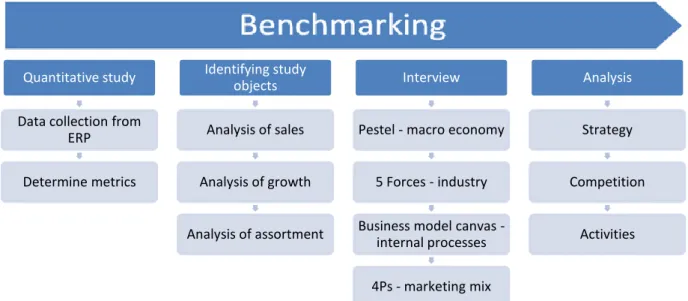Internal best practice benchmarking
in global corporations - Uncovering,
defining and utilizing best practices to
grow spare part sales
This article addresses one of the
findings in the paper “Internal
best practice benchmarking in
global corporations: Uncovering,
defining
and
utilizing
best
practices to grow spare part sales
(2014)”. The paper discusses
existing
benchmarking
frameworks
and
their
shortcomings
when
used
to
benchmark a global corporation
and its branches internally.
By Zlatan Alikadic, Lund
University, Faculty of Engineering
ver since Robert Camp defined the benchmarking process and its five phases, in the late 80’s, corporations all over the world have used his framework to pursue and attain the position as industry leaders. However, it has been shown, in a recent study, that Camp’s model cannot be applied to internal benchmarking straight “out of the box”. In the paper Internal best practice benchmarking in global corporations: Uncovering, defining and utilizing best practices to grow spare part sales (2014), the
shortcomings of Camp’s model, when used for internal benchmarking, are discussed.
Internal vs. external benchmarking The model is designed to help companies measure and compare certain metrics, like financial key figures, processes, performance etc., with competitors – usually in the same industry. Camp’s model is today the most cited of all and has proved it to be a solid and relevant model for the purpose. But when applied to internal benchmarking, the model comes short. To understand why the model falls short, one must understand the difference between internal vs. external benchmarking. When benchmarking externally, i.e. company-to-company, both objects usually share the same pre-conditions. In other words, the benchmarking objects share the same macro-environmental, geographical and cultural environments, since the chances are high they are in the same industry and therefore same country. However, when a global corporation tries to benchmark its branches in different parts of the world, the pre-conditions are not the same. Regulations, macro-economic performance, labor laws, cultures etc. impacts the measured output. Camp’s model is not designed to take factors like these into
account. Therefore there is a high probability the measured performance gaps will be hard to explain and therefore to improve. This is where Camp’s model falls short.
Developed model for internal
benchmarking
In recent project, described in the cited paper from 2014, the objective was to benchmark a global corporation’s branches and their processes related to sales of →
spare parts in order to uncover and define best-practices. By implementing the defined best-practices sales growth could be increased and sustained.
During the search for best practices, Camp’s model was used as a foundation. To take these external factors into account, the benchmarking model was complemented with strategic management frameworks, such as Business model canvas, PESTEL and
Porter’s five forces (see figure 1 below).
Figure 1 Developed benchmarking model.
Applicability
The new developed model turned out to be much more suitable for the purpose. Objects had been benchmarked (growth) and were about to be analyzed, the data contained some irregularities and outliers that needed to be explained. Since the model also examines external factors, these variations were quite easy to explain. In this particular
case some unusually high growth could be dedicated to market regulations that had positive effects for the benchmarked object. Knowing to what performance and output should be dedicated is absolutely essential in order to make a trustworthy analysis and recommendation. If the conventional model had been used, the risk would be high to make invalid conclusion and therefore producing an irrelevant result with a lack of substance.∎
Quantitative study
Data collection from ERP Determine metrics Identifying study objects Analysis of sales Analysis of growth Analysis of assortment Interview
Pestel - macro economy
5 Forces - industry Business model canvas -
internal processes 4Ps - marketing mix Analysis Strategy Competition Activities
